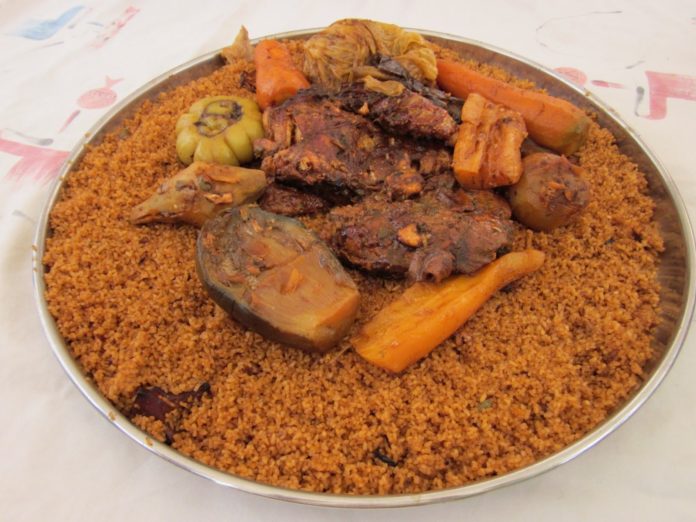On Wednesday, the United Nations Educational, Scientific and Cultural Organization (UNESCO) added the ceebu jën onto its list of intangible cultural heritage of humanity.
Ceebu jën is a dish that originated in the fishing communities on the Island of Saint-Louis in Senegal.
Although recipes vary from one region to the next, the dish is typically made with fish steak, broken rice, dried fish, mollusk and seasonal vegetables such as onions, parsley, garlic, chili pepper, tomatoes, carrots, eggplant, white cabbage, cassava, sweet potato, okra and bay leaf.
The inclusion of ceebu jën onto UNESCO’s list of intangible cultural heritage of humanity follows and application by the Senegalese government in October.
The dish is the most popular in the West African country’s 16 million population and is widely consumed in homes and restaurants. It is also a popular dish among street vendors.
President Macky Sall welcomed UNESCO’s recognition of ceebu jën.
“I welcome the inclusion of ceebu jën, Senegalese national dish, on the UNESCO list of intangible heritage. It is a fine illustration of the international fame of Senegalese culinary art,” he wrote on Twitter.
According to UNESCO, the quality of the fish and the choice of vegetables are determined by the importance of the event or the degree of affection one has for the guest.
The agency notes that the recipe and techniques are traditionally passed down from mother to daughter.
The dish is so valued in the country that people are forbidden from sitting with a raised knee while eating it. The bowl must also be held with the left hand, and grains of rice must not be dropped when eating.
“Ceebu jen” joins other food-related items on the UNESCO list, such as the art of Neapolitan “Pizzaiuolo”, and couscous culture in Mauritania, Morocco, Algeria and Tunisia. (CGTN)




